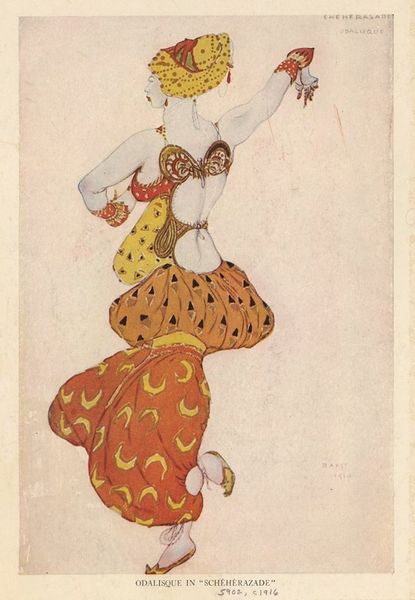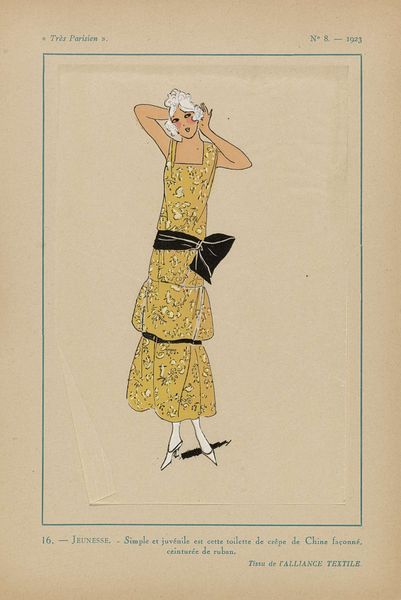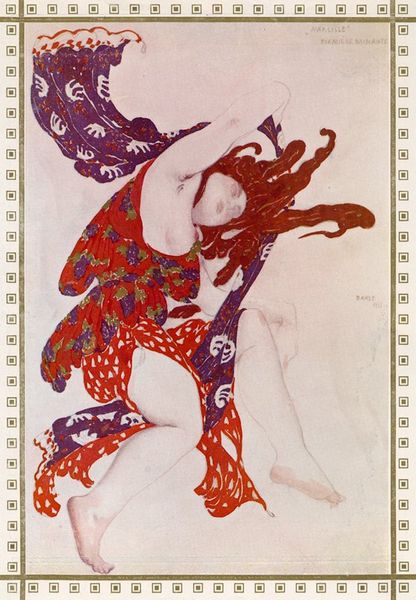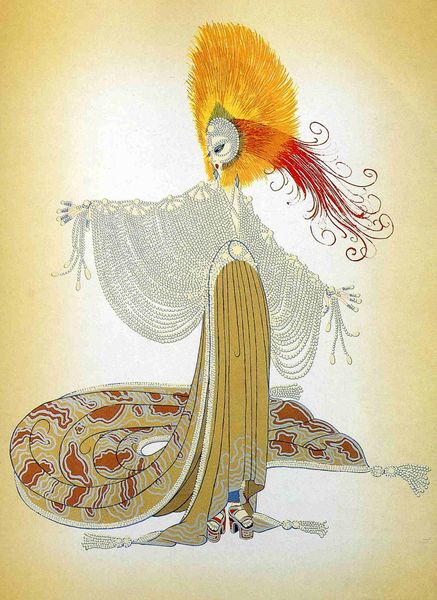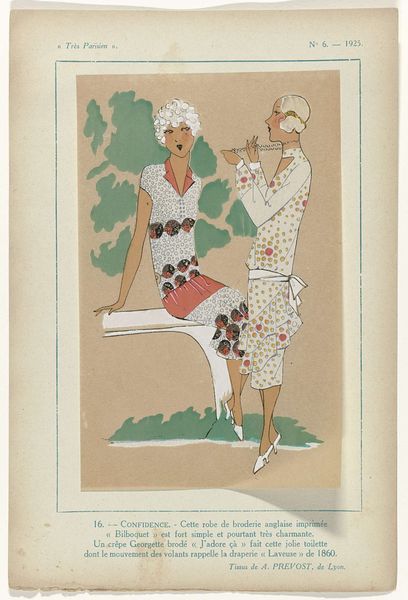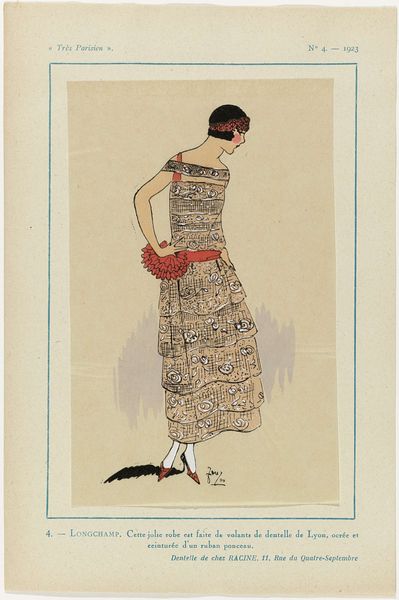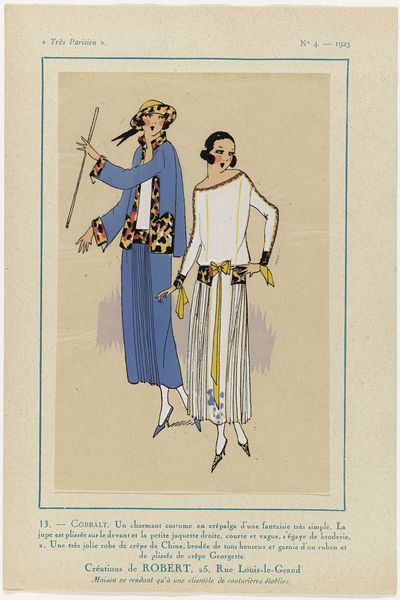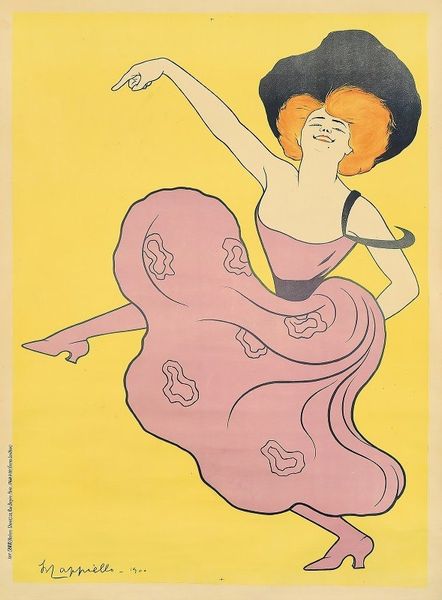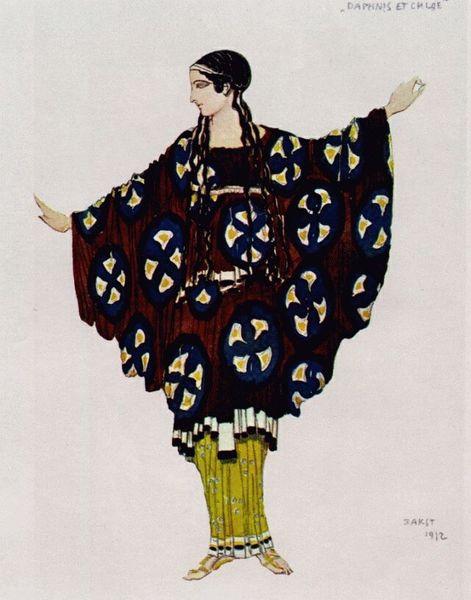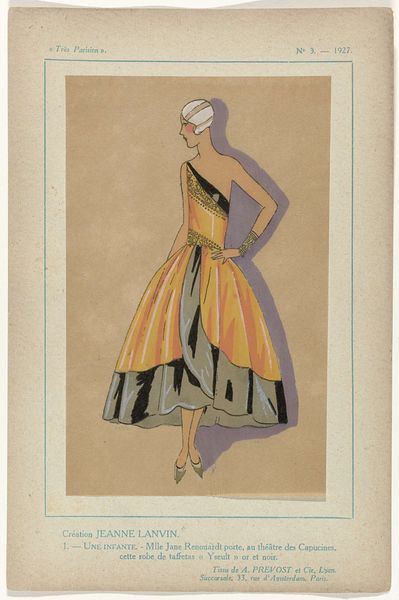
watercolor
#
art-nouveau
#
figuration
#
watercolor
#
orientalism
#
costume
#
symbolism
#
watercolour illustration
#
history-painting
Copyright: Public domain
Curator: What strikes me immediately is the incredible detail in this watercolor, it shimmers with potential. Editor: I'd like to introduce you to Léon Bakst's "Scheherezade Odalisque," created in 1910. It is quintessential Orientalism meeting Art Nouveau. Curator: Absolutely. The pose, the billowing trousers, the visible brushstrokes constructing the folds... it evokes a certain sensuality, almost daring. But the overt stylization can also read as deeply problematic in its exoticism. How does this piece sit within the history of ballet costume design, and Bakst’s broader political engagement? Editor: The artwork served as a costume design for the Ballets Russes production of Scheherezade, and must be interpreted within this socio-economic setting of early twentieth century theatrical design and artistic practice. It sits as an historical trace within an expanded cultural interpretation of orientalist representations on stage. The production, rife with sensuous movement and opulent set design, captivated European audiences but, naturally, reinforced colonial stereotypes. Bakst, as the designer, contributed directly to shaping the image of the "Orient" for Western consumption. Curator: The use of watercolor adds to this delicate dance between allure and constructed image. It is not a heavy oil painting. The lightness in handling, especially when coupled with these exotic tropes, renders it all as slightly insubstantial, theatrical. How does Bakst's process in costume-making—the craft involved in transforming design to three dimensions—intersect with this staged orientalism? How was his studio run? Editor: We need to examine both the labor invested into such a grand ballet and the labor Bakst oversaw in his own studio. There's also the point of considering that what is crafted in a costume translates to crafting an identity—perhaps how we might address the historical lack of authentic representation, particularly around ethnicity and race on stage during that era. What social performances is art involved in both as production and subject matter? Curator: Precisely, we are challenged to confront those erasures and question the ongoing implications of this aesthetic lineage. The history within the artwork continues to echo loudly around us, encouraging necessary conversations. Editor: I agree. Analyzing the costume design allows us a lens into historical perspectives of both dance production and how the labor within studio settings engaged with early modernist performances.
Comments
No comments
Be the first to comment and join the conversation on the ultimate creative platform.
